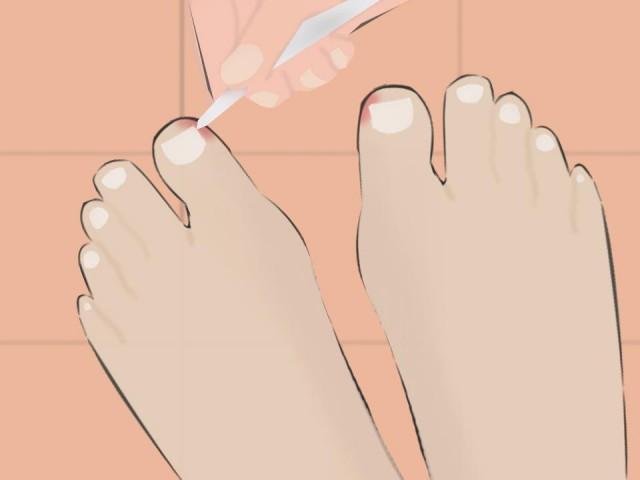How to prevent those painful ingrown toenails, according to experts
In the greater scheme of things, an ingrown nail, like a paper cut or a splinter, is no big deal.
But ask anybody who’s ever suffered any one of those three and they’ll tell you, they’re the worst…and worthy of the string of expletives they elicit.
Just Google “ingrown nails” and the basic definition is enough to make your toes curl: It's when the corner of a toenail grows in and digs into the skin, causing pain, inflammation, and infection.
Aside from being unpleasant and painful, when an ingrown is infected, it can require surgery.
And because an ounce of prevention is worth a pound of cure, we asked three medical professionals to share valuable tips on how you can avoid getting ingrown nails.

Wear the right size shoes
According to Anna Carmela M. Ramirez MD, DPDS, wearing shoes that are too tight or too small can also lead to ingrown nails.
Claire Reyes-Habito, MD, FPDS of the Asian Hospital and Medical Center agrees: “Ill-fitting shoes tend to rub the lateral sides of your toe, making it prone to ingrown nail,” she says.
When buying shoes, make sure they’re not too tight. Tiongson recommends getting shoes with enough room for your toes to wiggle in.
Meanwhile, Reyes-Habito suggests buying “footwear that does not rub the lateral sides of your toes too much.”
Only go to trusted and reputable nail salons
Not all pedis are created equal, so choose a reputable nail salon or spa with well-trained technicians and where the instruments are cleaned after each use. As Leslie Colleen Acosta Tiongson MD, DPDS, a dermatologist at Metro North Medical Center, points out, “Ingrown nails may be caused by improper manipulation of the nail during pedicures. When nails are cut improperly, they may grow inward.”
Before you cancel that pedi appointment though, know that pedicures aren’t necessarily bad. “As long as the person doing [the pedicure] does not excessively or incompletely manipulate your toenails, [it should be fine],” explains Tiongson.
She adds that it also helps if the instruments and tools are properly sanitized. “Or better yet, bring your own,” she suggests.
Cut your toenails regularly and properly
Cutting your toenails regularly is not just plain good grooming, it also helps prevent ingrown.
Ramirez says, “It is important to cut your nails regularly because long nails can go under the skin. Since toenails grow slower than finger nails, every two to three weeks should be fine.”
How you cut your toenails also matters; the length and shape makes a difference. Reyes-Habito advises against cutting the nails too short, trimming the side of the nails, and removing cuticles.
She recommends cutting them straight across, or in salon-speak, into a square shape, explaining that cutting your nails with the corners rounded can and will increase the probability that the edges of the toenails will come in contact with the skin when they start growing.
Protect your feet from trauma or injury
Wearing footwear the protects your feet from trauma also helps minimize the chances of developing ingrown nails. Ramirez qualifies trauma as any injury to the foot or the nail, like stubbing your toe, dropping a heavy object on your foot, or getting your toe stuck in the door. These, she shares, can change the direction of nail growth, which in turn can contribute to ingrown nails.
In the unfortunate even that you do develop ingrown nails, here’s what you can do. “The goal,” according to Reyes-Habito, “is to lift the edge of the nail from the skin.” You can do this at home on your own, if you can stand the pain. If not, she suggests you visit a doctor, who can anesthetize the toe and do it for you.
If you do decide to do it at home, Tiongson recommends to soak your foot in warm water for 10 minutes first. If after attempting the procedure yourself, bleeding occurs, she says to stop immediately and apply antibacterial ointment. If it gets worse after three days, go to the doctor. Ramirez adds that if the ingrown nail gets infected, you will need to take oral antibiotics and may have to undergo surgery to remove it. — LA, GMA News



